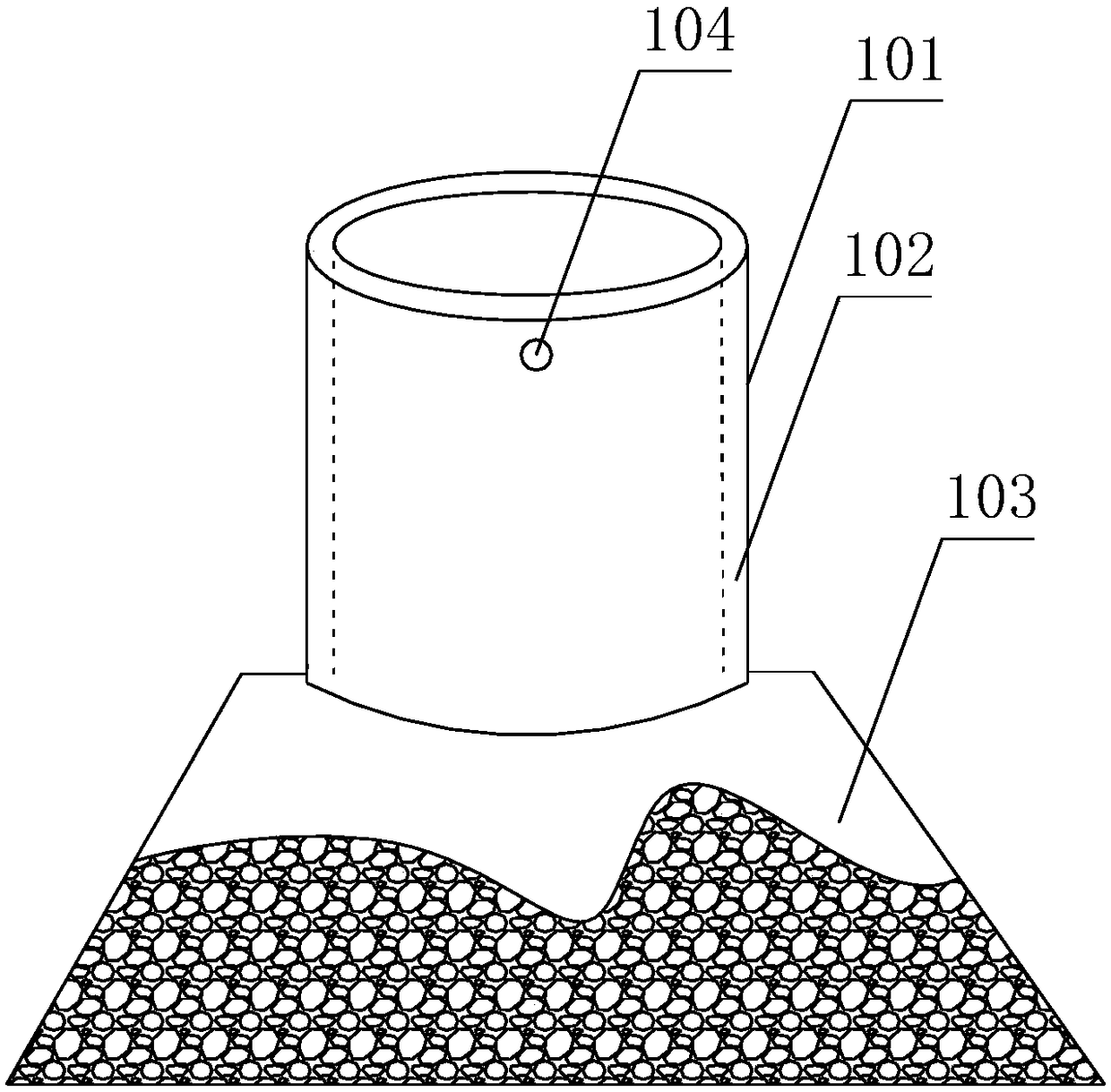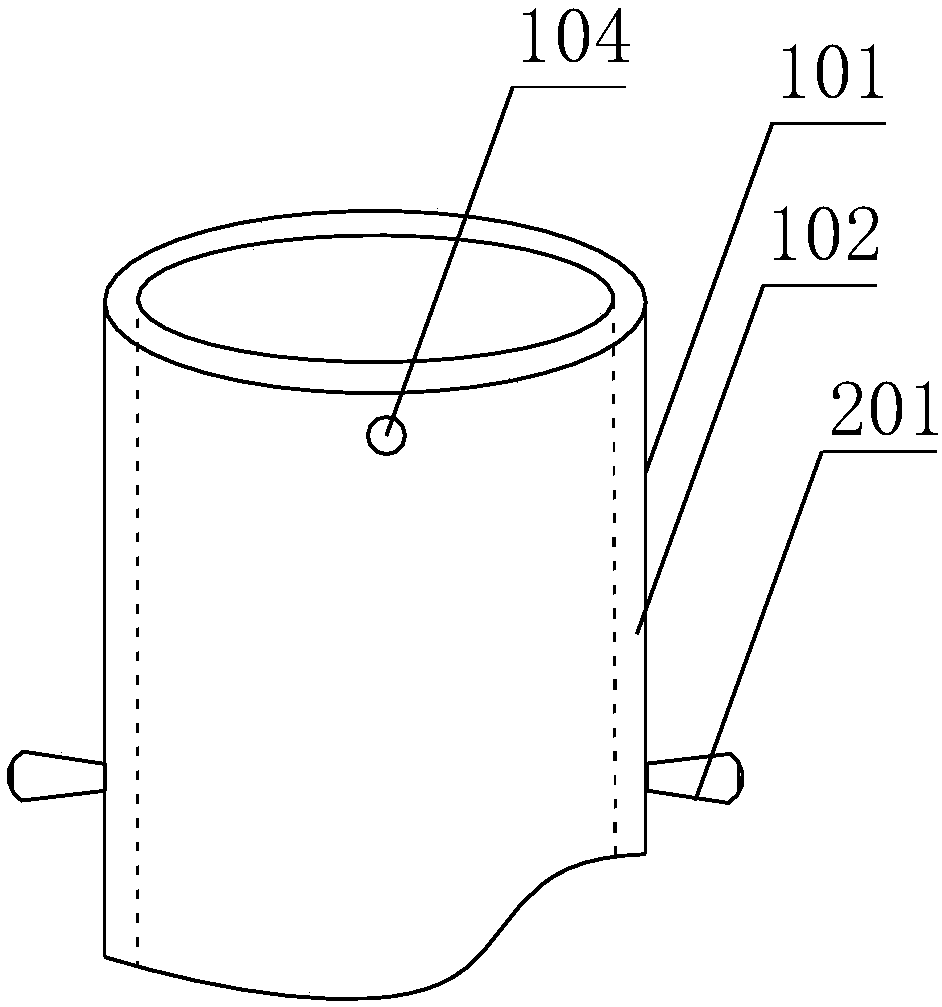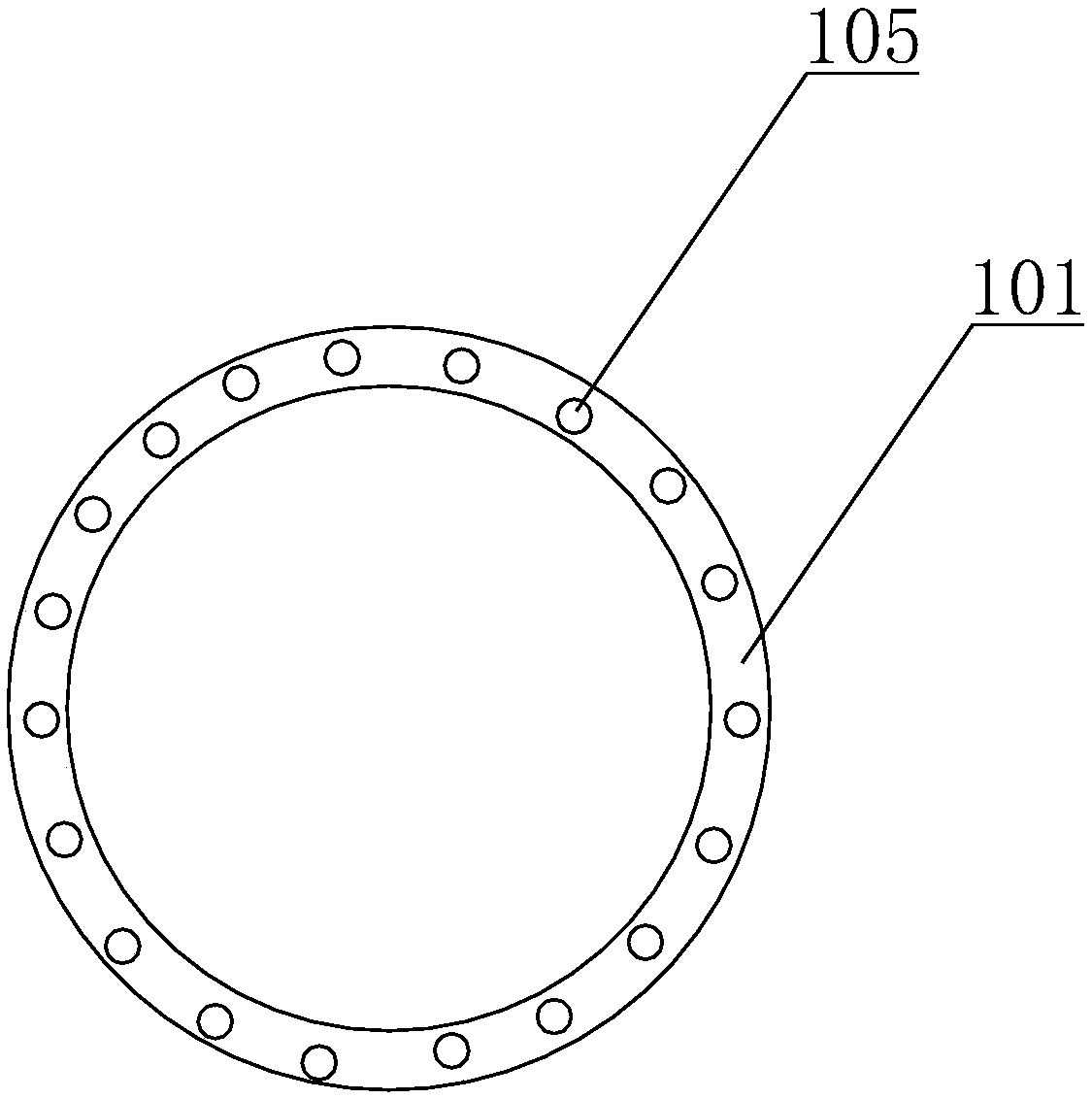Plant planting method for reducing water evaporation in desert
A planting method and plant technology, applied in botany equipment and methods, plant protection, land preparation methods, etc., can solve the problems of low survival rate of saplings, achieve the effects of reducing water evaporation, achieving repair effects, and ensuring healthy growth
- Summary
- Abstract
- Description
- Claims
- Application Information
AI Technical Summary
Problems solved by technology
Method used
Image
Examples
Embodiment 1
[0063] Embodiment 1 sandy soil improver and its preparation
[0064] According to parts by weight, its raw material components include: 100 parts of diatomite, 80 parts of fly ash, 70 parts of bentonite, 50 parts of kaolin, 80 parts of peat, 120 parts of plant straw powder, 12 parts of algae-containing carrier, organic fertilizer 40 parts, 40 parts of humus, 20 parts of zeolite powder, 20 parts of glass microspheres, 18 parts of silica powder, 20 parts of microbial bacterial liquid; 10 parts of polypropylene alcohol, 10 parts of urea, 8 parts of monoammonium phosphate, 30 parts of traditional Chinese medicine waste residue powder , 20 parts of waste tea dregs, 8 parts of fulvic acid concentrate, 40 parts of distiller's grains, 30 parts of leaf humus, 40 parts of sawdust, 20 parts of chaff ash, 10 parts of pine phosphorus, 50 parts of coconut peat and 30 parts of slow-release fertilizer .
[0065] Preparation
[0066] S11, mix kaolin and fly ash evenly, add water and stir to ...
Embodiment 2
[0073] Embodiment 2 sandy soil improver and its preparation
[0074] According to parts by weight, its raw material components include: 150 parts of diatomite, 120 parts of fly ash, 90 parts of bentonite, 70 parts of kaolin, 120 parts of peat, 160 parts of plant straw powder, 20 parts of algae-containing carrier, organic fertilizer 60 parts, 70 parts of humus, 35 parts of zeolite powder, 30 parts of glass microspheres, 25 parts of silica powder, 30 parts of microbial bacterial liquid; 120 parts of polypropylene alcohol, 15 parts of urea, 10 parts of monoammonium phosphate, 40 parts of traditional Chinese medicine waste residue powder , 40 parts of waste tea dregs, 24 parts of fulvic acid concentrate, 60 parts of distiller's grains, 60 parts of leaf humus, 60 parts of sawdust, 30 parts of husk ash, 30 parts of pine phosphorus, 70 parts of coconut peat and 40 parts of slow-release fertilizer .
[0075] Preparation
[0076] S21, kaolin and fly ash are mixed evenly, and water is...
Embodiment 3
[0082] Embodiment 3 sandy soil improver and its preparation
[0083] According to parts by weight, its raw material components include: 120 parts of diatomite, 100 parts of fly ash, 80 parts of bentonite, 60 parts of kaolin, 100 parts of peat, 140 parts of plant straw powder, 16 parts of algae-containing carrier, organic fertilizer 50 parts, 55 parts of humus, 30 parts of zeolite powder, 25 parts of glass microspheres, 20 parts of silica powder, 25 parts of microbial bacterial liquid; 15 parts of polypropylene alcohol, 12 parts of urea, 12 parts of monoammonium phosphate, 35 parts of traditional Chinese medicine waste residue powder , 30 parts of waste tea dregs, 16 parts of fulvic acid concentrate, 50 parts of distiller's grains, 45 parts of leaf humus, 50 parts of sawdust, 250 parts of husk ash, 20 parts of pine phosphorus, 60 parts of coconut peat and 35 parts of slow-release fertilizer .
[0084] Wherein, the plant stalk powder comprises the following components by weight...
PUM
| Property | Measurement | Unit |
|---|---|---|
| Granularity | aaaaa | aaaaa |
Abstract
Description
Claims
Application Information
 Login to View More
Login to View More - R&D
- Intellectual Property
- Life Sciences
- Materials
- Tech Scout
- Unparalleled Data Quality
- Higher Quality Content
- 60% Fewer Hallucinations
Browse by: Latest US Patents, China's latest patents, Technical Efficacy Thesaurus, Application Domain, Technology Topic, Popular Technical Reports.
© 2025 PatSnap. All rights reserved.Legal|Privacy policy|Modern Slavery Act Transparency Statement|Sitemap|About US| Contact US: help@patsnap.com



